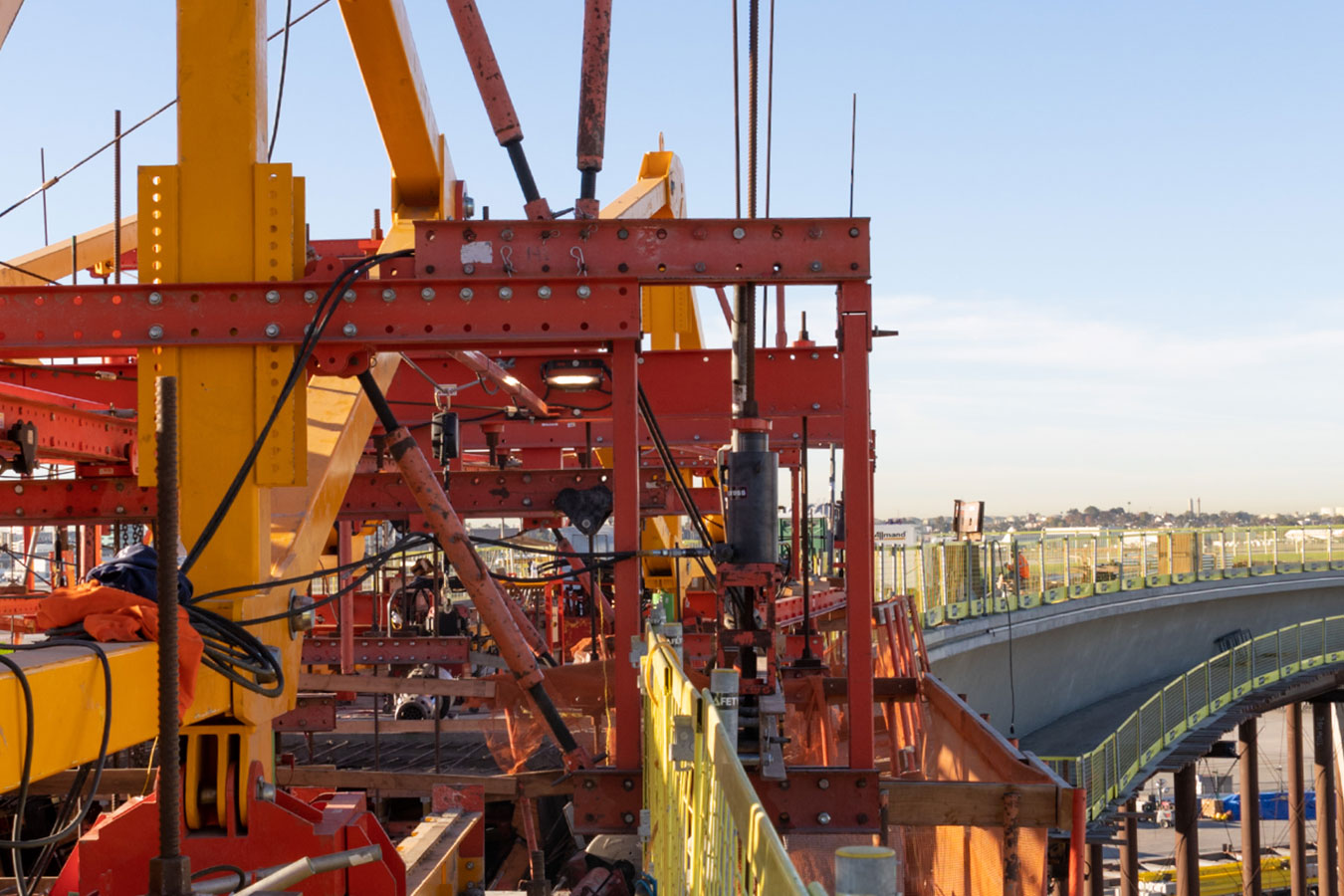The Evolution of Bridge Construction: Safer, Faster, Smarter
By Dan Straub, Civil Segment Manager at PERI USA
Why Innovative Formwork Systems Are Key to Enhancing Bridge Construction
Your daily commute likely takes you over heavily traveled bridges both large and small, whether you are in your own car or using public transportation. Each span provides crucial connectivity between communities in the region, allowing you to cross a major river, a small stream, or perhaps another roadway below. The burning question: How safe are those bridges you cross every day? According to the American Road and Transportation Builders Association, one in three bridges across the United States need to be repaired or replaced. Even more alarming: Seven percent are structurally deficient. This means that more than 75,000 bridges in America are in urgent need of significant repairs. Some are approaching the end of their anticipated lifespan.
Passed into law in 2021, the $1.2-trillion Infrastructure Investment and Jobs Act is aimed at repairing 65,000 miles of roads and 1,500 bridges. As a result of decades of neglect, the record-setting investment has activated more than 40,000 projects around the nation.
This has precipitated another challenge: An acute shortage of skilled workers. Older workers are retiring at an accelerated pace, fewer young workers are entering the profession, and construction firms are struggling to fill openings. For the nation to make good on its investment, those same firms must rely on recent innovations in bridge formwork, all aimed at making the construction process safer, faster, and more efficient. The primary objective: Remove the complexity for workers on the job site.

Unlocking Innovation: Pre-Engineered Systems
Pre-engineered formwork systems are part of the answer to this complex equation and are becoming increasingly popular. Versus being built from scratch and implemented on the job site by skilled workers, these systems include a simplified set of parts and connections, moving most of the engineering into the system and reducing chances for error in the field. With a more optimized process, quality control, and automation, components can be produced faster than other systems on a construction site. Pre-engineered formwork plays a significant role in efficient bridge construction by reducing the need for as many on-site laborers, contributing to enhanced worker safety by reducing hazards, onsite accidents, and injuries.
An example of this innovation is PERI USA’s VARIOKIT Pier System (VPS). Offering versatility, rentability, and top-notch performance, the VPS system integrates the strengths of traditional dancefloor systems and self-spanning systems. The result provides higher productivity and lower costs with a reduction in safety risks.
VPS caters to dancefloor and steel girder formwork users, providing a singular solution for identical structures and ones with various dimensions. While offering flexibility, VPS ensures a simplified process to take the platform apart in only two pieces and reassemble again on the next cap with less manipulation, resulting in less time. With a simplified group of components, reduced quantity of bolt connections, and the innovative one-sided X-bolt, the room for user error is minimized, providing crews a hassle-free solution.
The success of VPS was on display in construction of the IH-820 Southeast Connector in Fort Worth, Texas. When rebuilding more than 15 miles of major interstates, crews were in search of a modular system that could accommodate various cap forms, along with the requirement to adapt existing equipment. The long-awaited project was designed to relieve congestion and increase safety and efficiency for travelers for the entire Metroplex.

Bridging the Gap: Balanced Cantilever
Another commonly used method in bridge construction is the balanced cantilever method. The balanced cantilever method completes the superstructure of the bridge using cantilever arms projecting from bridge piers. This method is typically employed when spans are greater than 300 feet, bridge deck spans over existing travel ways, or when there is a limited accessibility for cranes and other equipment.
Specifically engineered for this type of construction, PERI’s VARIOKIT Balanced Cantilever (VBC) system is a combination of load-bearing, specially developed components and VARIOKIT core components to complete the supporting structure and formwork. The balanced cantilever equipment can be adapted flexibly to accommodate a wide range of bridge cross-sections and geometries.
The first use of the system in the United States was at Los Angeles International Airport, which recently built a 2.25-mile Automated People Mover (APM) to alleviate travel congestion to and from the terminal. As part of the project, crews had to build the APM tracks over operational roadways with little to no disruption to traffic, which meant traditional falsework methods could not be utilized. PERI stepped in to design a cast-in-place segmental bridge construction method utilizing formwork travelers. The PERI VBC system reduced construction time with high load-bearing capacity, integrated hydraulics, and safe access solutions. With VBC, crews could transfer fresh concrete loads into the supporting structure and move formwork from section to section easily.

What’s Next?
Across the nation, construction firms of all sizes are responding to the recent investment in infrastructure. As local, state, and federal entities fund and advance projects to fulfill this investment, those same firms are grappling with the ongoing impact of a skilled worker shortage, a dilemma that may take years to resolve.
Innovative formwork solutions for bridge construction can help to bridge this gap. They represent the very latest engineering solutions and are all aimed at making bridge construction simpler, safer, and faster.
Easy-to-use, customizable systems that offer solutions for today’s construction projects – systems that also require minimal expertise to assemble and operate on site – can help the nation realize the promise of a once-in-a-generation investment. It is an investment all aimed at making the daily commute easier and safer for millions of Americans.
Dan Straub, civil segment manager at PERI USA, joined the organization in 2014 with a focus on the civil infrastructure market. He brings expertise in bridge construction and infrastructure market intelligence, and guides PERI’s product development and life cycle management. Straub also leads PERI’s infrastructure market growth strategies in the United States and Canada.
source https://csengineermag.com/the-evolution-of-bridge-construction-safer-faster-smarter/
تعليقات
إرسال تعليق